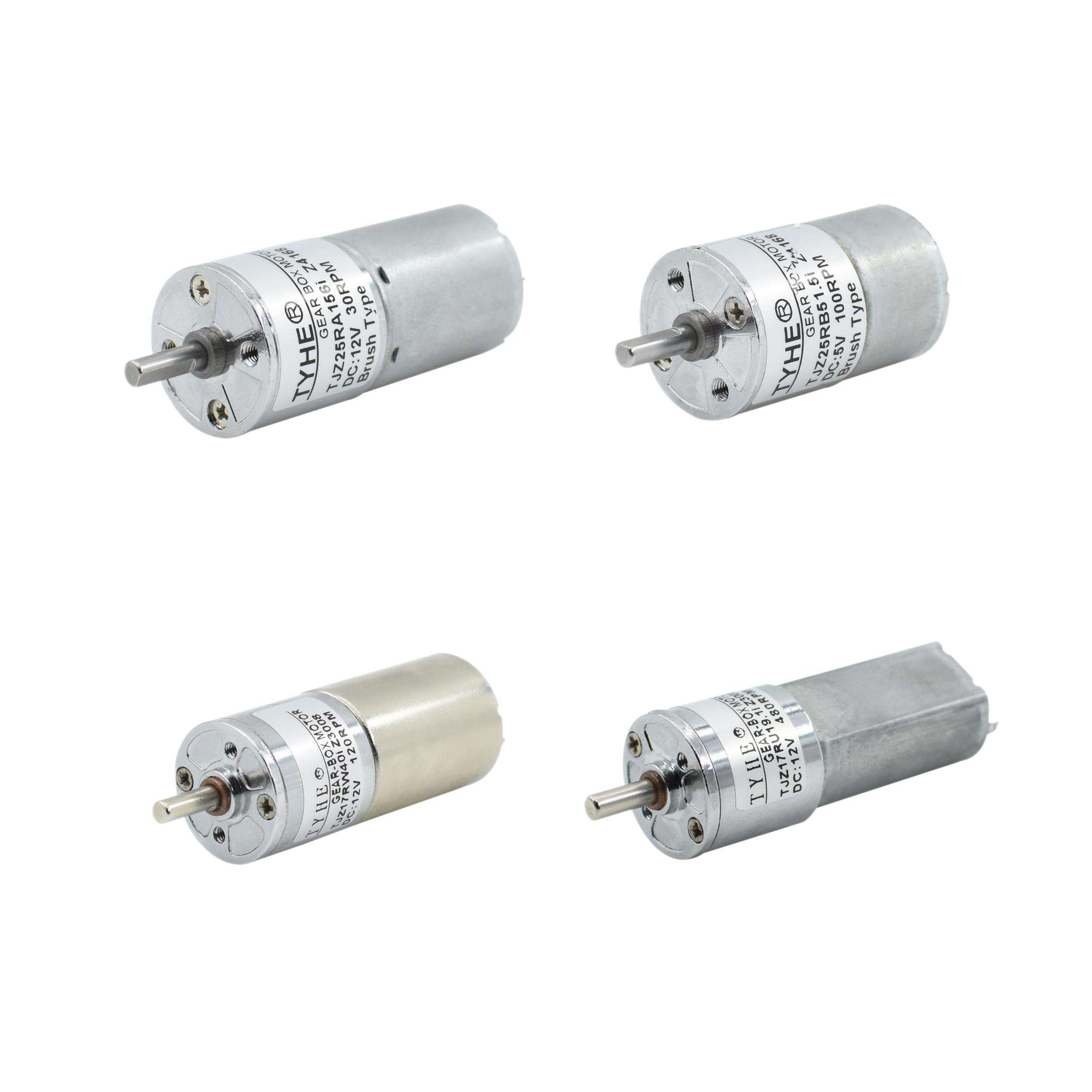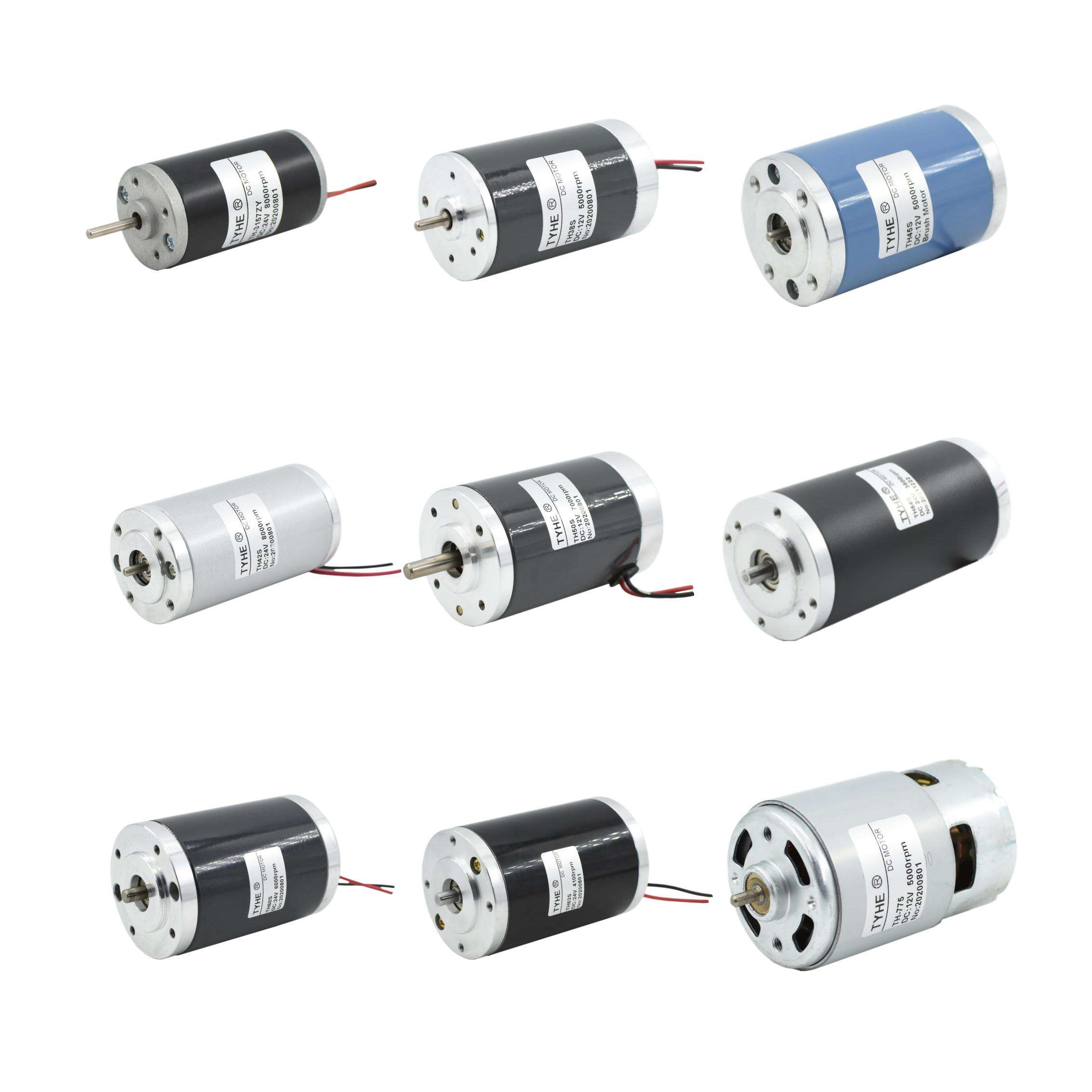Understanding the Fundamentals of DC Motor Selection
Selecting the perfect small dc motor for your project can make the difference between success and failure. Whether you're building a robot, creating automated home devices, or developing industrial equipment, understanding the key characteristics and specifications of small dc motors is crucial. This comprehensive guide will walk you through everything you need to know about choosing the ideal motor for your specific requirements.
Essential Specifications and Parameters
Voltage and Current Requirements
The voltage rating of a small dc motor is one of the first specifications to consider. Most small dc motors operate between 1.5V to 24V, with common ratings including 3V, 6V, and 12V. The voltage requirement directly impacts the motor's speed and torque output. Higher voltage ratings generally result in faster rotation speeds, but they also require more substantial power sources.
Current draw is equally important, as it determines the power consumption of your motor. A small dc motor typically draws anywhere from a few milliamperes to several amperes, depending on the load and operating conditions. Understanding both the starting current (initial surge) and running current (steady-state operation) helps ensure your power supply can handle the motor's demands.
Speed and Torque Characteristics
Motor speed, measured in RPM (rotations per minute), varies significantly among different small dc motor models. Some applications require high-speed operation exceeding 10,000 RPM, while others need slower, more controlled movement. The no-load speed specification provides a baseline, but remember that actual operating speed decreases under load.
Torque capacity determines the motor's ability to overcome resistance and move loads. Stall torque represents the maximum torque available when the motor is powered but prevented from rotating. Working torque, typically 20-30% of stall torque, is what's available during normal operation. Matching these specifications to your project's requirements ensures optimal performance.

Physical Considerations and Mounting Options
Size and Weight Constraints
The physical dimensions of a small dc motor can significantly impact your project's design. Modern small dc motors come in various form factors, from tiny 6mm diameter units for miniature devices to larger 37mm motors for more demanding applications. Consider not just the motor's body length and diameter, but also the shaft dimensions and any mounting brackets or gearboxes attached.
Weight considerations become particularly important in mobile or handheld applications where every gram matters. Lighter motors might sacrifice some power for portability, while heavier ones often offer more robust performance. Balance these factors against your project's mobility requirements.
Mounting Methods and Mechanical Integration
Proper mounting ensures reliable operation and minimizes vibration. Many small dc motors feature standardized mounting holes or brackets that simplify installation. Some common mounting options include through-hole mounting, face mounting with screws, and clip-on arrangements. Consider accessibility for maintenance and potential need for future replacement when choosing mounting methods.
The shaft configuration deserves special attention. Factors like shaft diameter, length, and any required modifications (such as flats or cross-holes) affect how the motor connects to your mechanism. Some applications might benefit from double-shaft motors, allowing drive components on both ends.
Performance Optimization and Control
Speed Control Mechanisms
Controlling the speed of a small dc motor involves several possible approaches. PWM (Pulse Width Modulation) represents the most common method, offering efficient speed control without excessive heat generation. The motor's response to PWM signals depends on its electrical characteristics, particularly inductance and resistance.
Some applications require precise speed feedback, achievable through encoders or Hall effect sensors. These additions increase complexity but enable closed-loop control systems that maintain exact speeds regardless of load variations. Consider whether your project needs this level of control precision.
Efficiency and Heat Management
Motor efficiency affects battery life in portable projects and operating costs in permanent installations. Higher efficiency small dc motors typically cost more but save energy and generate less heat during operation. Heat generation requires particular attention in enclosed spaces or continuous-duty applications.
Implementing proper thermal management through heat sinks, ventilation, or duty cycle limitations helps prevent overheating. Consider the environmental conditions where your project will operate, including ambient temperature and potential exposure to moisture or dust.
Frequently Asked Questions
What's the typical lifespan of a small DC motor?
The lifespan of a small dc motor typically ranges from 1,000 to 10,000 hours of operation, depending on quality, usage patterns, and environmental conditions. Proper maintenance and operating within specified parameters can significantly extend motor life.
Can I run a small DC motor on batteries?
Yes, small dc motors are commonly powered by batteries. However, ensure the battery voltage matches the motor's rating and can provide sufficient current. Rechargeable batteries like Li-ion or NiMH are popular choices for portable applications.
How do I prevent motor noise and vibration?
Reducing noise and vibration involves several strategies: using proper mounting techniques, implementing soft starts and stops, ensuring good shaft alignment, and selecting motors with quality bearings. Adding damping materials and maintaining balanced loads also helps minimize unwanted vibration.


